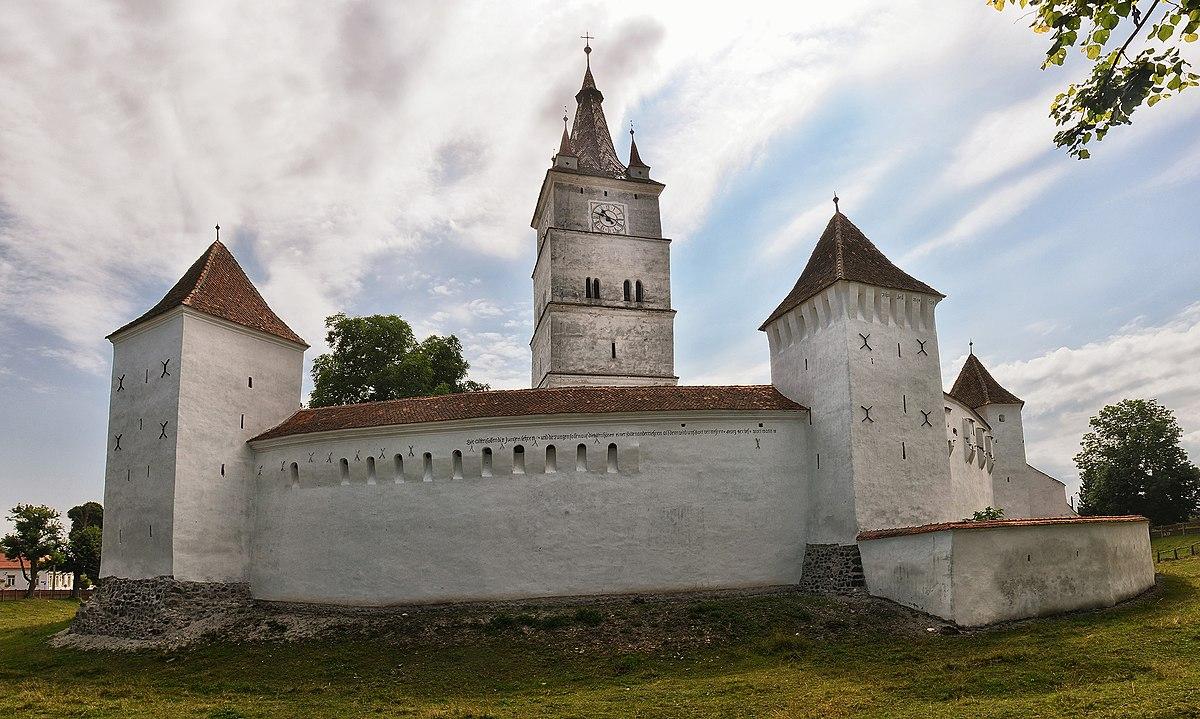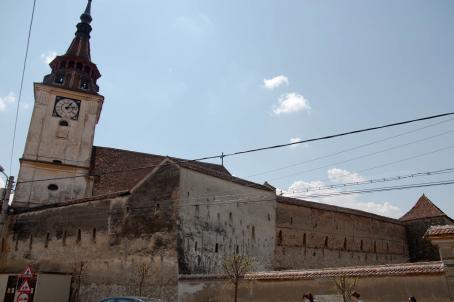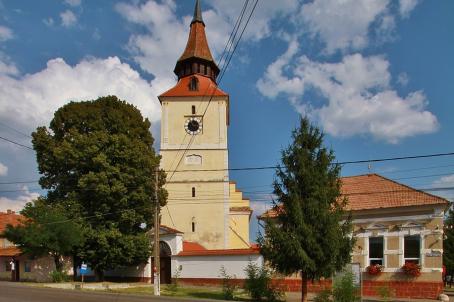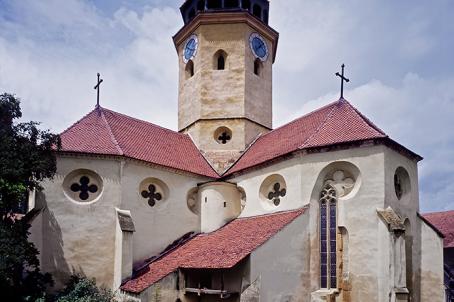Hărman Fortified Church
The three-aisles Romanesque basilica, already strengthened by a defence wall, was equipped with a bell tower on the western side in 1290. At the beginning of the 15th century, both the tower and the nave were adapted to the Gothic style and a second ring wall was erected. The first defence wall was heightened up to 12 m and strengthened by seven defensive towers and an outer bailey. A third wall, which did not survive to this today, surrounded the moat that was filled up in 1814. A parapet walk was built on the inside of the first defence wall, which is partially preserved today.
Remarkable are the granaries and the rooms attached to the southern side of the church. The western tower, the tallest in Ţara Bârsei, was provided with a new spire in 1794. The inner furniture mostly dates back from the 18th century. A pre-reformation chapel in the eastern tower is richly decorated with outstanding frescoes depicting the Last Judgement and the Punishment of Sinners among others . The valuable mural painting requires restoration work.
About this building
For more information visit on this building visit






